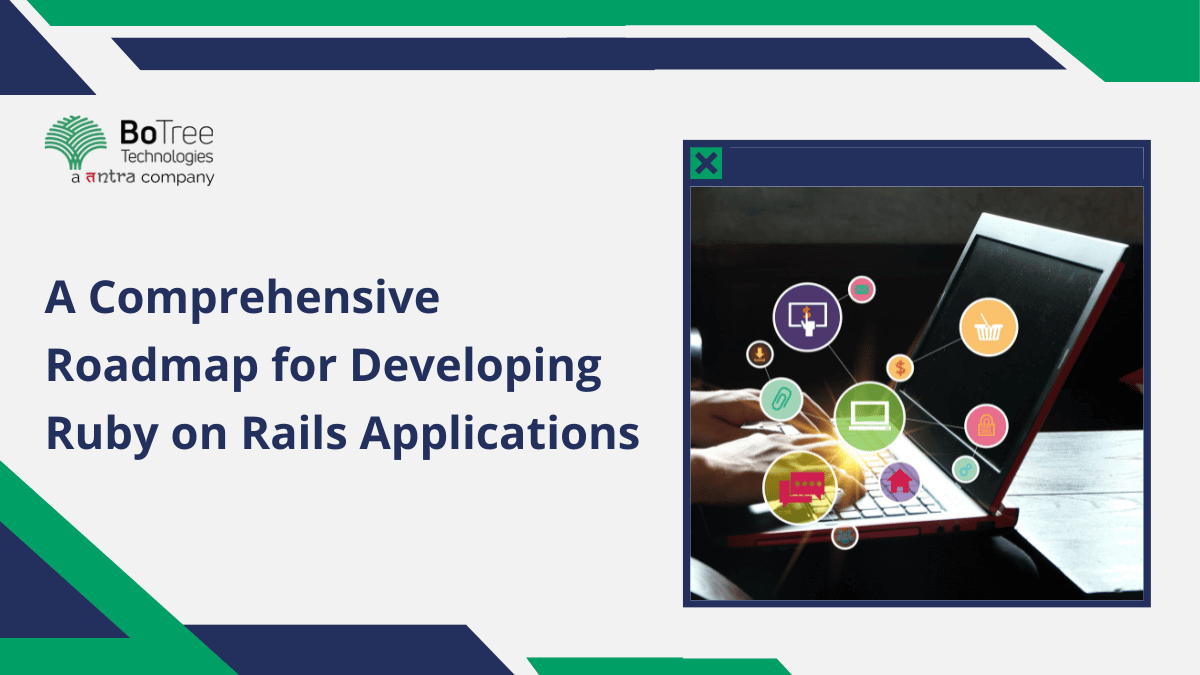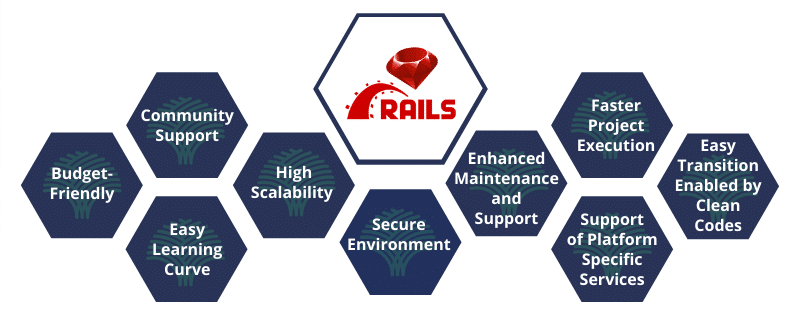
A Comprehensive Roadmap for Developing Ruby on Rails Applications
An open-source framework for creating web applications is Ruby on Rails, which is written in the Ruby programming language. Ruby on Rails app development is enjoyable and simple with Rails because it allows you to write less code while achieving more than most frameworks.
Ruby on rails framework runs under the premise that there is a “better” method to create anything.
Developers with Ruby on Rails experience benefit greatly as the need for skilled Ruby on Rails technologists rises. According to Indeed, the average pay of hire ruby on rails developers is 86% more than the national average for all job posts.
Moreover, Ruby is fifth on the list of the highest-paying programming languages in the Stack Overflow survey from 2022.
Read More: Top 5 Most popular Ruby on Rails IDE for Web Development
What is Rails?
Ruby is a back-end software program, and Rails is a robust, incredibly opinionated, full-stack web application framework. Because of its cutting-edge features, like table migrations and scaffolds, it is used to create robust online applications swiftly.
To streamline workflow and organize your code, Rails provides a default structure. Rails users claim that it makes developing applications much easier and more enjoyable.
Model-View-Controller (MVC) architecture serves as the foundation for Rails development, which is also governed by the Don’t Repeat Yourself (DRY) software development concept.
Key Characteristics of Rails
Even if you only have a little programming knowledge of Ruby, anyone can learn Rails. Full-stack Rails provides a variety of integrated tools for quickly building dynamic applications. Listed below are some of the key characteristics that give Rails its strength:
- Automated Testing
- Because testing is integrated into Rails, test cases are simpler to create and run.
- Scaffolding
- This simplifies developing data management models, user-data interaction views, and model-view communication controllers.
- Active Record
- Rails operates under the presumption that data access logic should be included as part of the object to teach users how to read and write to the database. Things carry persistent data and action that relies on them.
- A community for Rails
- There are frequent fixes and upgrades thanks to Rails’ active and engaged community.
- Convention trumps configuration
- According to Rails, the convention is more significant than the configuration. The framework takes control and makes choices to boost productivity.
- According to Rails, the convention is more significant than the configuration. The framework takes control and makes choices to boost productivity.
Roadmap for Application Development
Ruby on Rails is the best web framework that allows developers to build applications using the Ruby programming language quickly. If you are looking for a Ruby on Rails application development, here is a comprehensive roadmap to guide you through the process:
- Learn Ruby
- Before diving into Rails, you should grasp the Ruby programming language well. You can start reading “The Ruby Programming Language” by David Flanagan and Yukihiro Matsumoto or “Learn Ruby the Hard Way” by Zed A. Shaw.
- Learn Rails
- After learning Ruby, you can start learning the basics of Rails. The official Ruby on Rails documentation is a good place to start, and many online tutorials are available. Some popular online resources include Codecademy, Ruby on Rails Tutorial by Michael Hartl, and Rails Girls.
- Plan Your Application
- Before you start coding, it’s essential to plan your application. Decide on the features you want to include, the user interface, and any third-party integrations you may need.
- Set Up Your Development Space
- You must set up a development space with Ruby, Rails, and a database. There are many options for this, but one popular choice is to use a tool like Docker or Vagrant to create a virtual environment.
- Create Your Application
- Once you have your development environment, you can start building your application. Use Rails’ built-in generators to create models, controllers, and views, and start writing code to implement your planned features.
- Test Your Application
- Testing ruby on rails applications is an important part of any software development process, and Rails provides several built-in testing tools. Use these tools to write unit, integration, and end-to-end tests to ensure your application works correctly.
- Application Deployment
- Once your application is complete and tested, you must deploy it to a production environment. Many options include cloud hosting providers like Amazon Web Services or Heroku or self-hosting on a dedicated server.
- Maintain And Improve Your Application
- Once your application is live, you must maintain and improve it over time. This includes performance improvements, bug repairs, and new feature additions.
- By considering these steps, you can build a robust and scalable Ruby on Rails application that meets your and your users’ needs.

Ruby on Rails Best Practices
Ruby on Rails is a web framework for building scaling ruby on rails applications, maintainable, high-quality web applications. Here are some best practices for developing Ruby on Rails applications:
- Follow The Rails Conventions
- Following the naming and structure conventions that Rails has included makes it simpler for other developers to understand your code. Use “snake case” for method names and “CamelCase” for class names.
- Keep Your Controllers Skinny
- Rails controllers should be kept straightforward and concentrated on processing HTTP requests and returning results. A lot of the application functionality should be moved to models or services.
- Use RESTful Routing
- Rails use RESTful routing by default, and following this convention is a good practice. Use the standard HTTP verbs (GET, POST, PUT, DELETE) to map requests to the appropriate controller actions.
- Optimize Database Queries
- To prevent performance issues, be sure you minimize your database queries. Reduce the number of database queries required to load data by utilizing ActiveRecord’s built-in query methods, such as joins, includes, and preload.
- Keep Views Simple
- Views should be straightforward and centered on displaying facts. Use helpers to contain common view functionality instead of placing logic in views.
- Views should be straightforward and centered on displaying facts. Use helpers to contain common view functionality instead of placing logic in views.
- Use Version Control
- Use a version control system like Git to manage your code and collaborate with other dedicated ruby on rails developers. Keep your commits small and focused, and use meaningful commit messages.
- Write Automated Tests
- Creating automated tests is crucial to creating Rails apps of the highest caliber. Write unit, integration, and acceptability tests using RSpec or Minitest.
- Use Caching
- Your Rails application’s performance may be significantly impacted by caching. Utilize the built-in caching feature of Rails to cache frequently used information or pages.
- Keep Your Code Dry
- Avoid reiterating yourself. Keep your code tidy and simple to maintain, and avoid repeating it.
- Using these best practices, you can create high-quality, scalable, and maintainable Ruby on Rails apps.
Final Words
Popular for its ease of use and scalability, Ruby on Rails is a web framework of choice for many developers. With its built-in conventions and rich features, Rails allows developers to build complex applications quickly and efficiently. You can develop high-quality and robust Rails applications by following best practices like RESTful routing, keeping controllers skinny, optimizing database queries, and writing automated tests.
Furthermore, the Ruby on Rails community is large and active, providing access to many helpful resources like documentation, tutorials, and open-source libraries. Whether building a small web application or a large-scale enterprise system, Ruby on Rails is a solid choice for developing high-quality and efficient applications.
BoTree Technologies is a leading software development company for all your software and application requirements. We have 9+ years of experience in building web apps. Our team of 70+ developers is ready to serve you – whichever industry you are in.
Contact us today for a FREE CONSULTATION.




